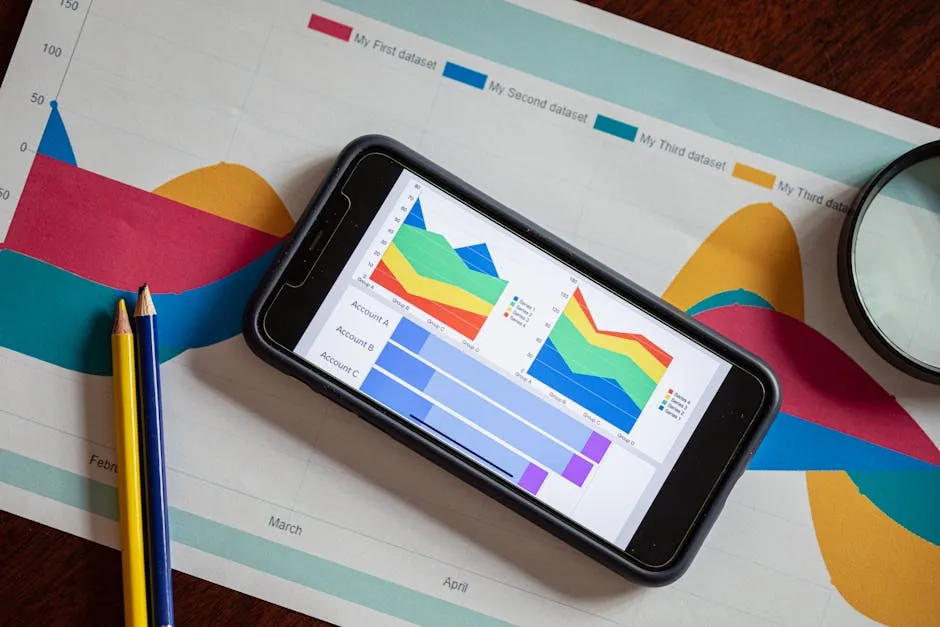Introduction
When venturing into the world of statistics, one term that often pops up is “sampling frame.” But what exactly does it mean? In simple terms, a sampling frame is the backbone of any statistical survey. It’s the list or database from which a sample is drawn. Without a solid sampling frame, researchers might as well be throwing darts in the dark.
Understanding the importance of a sampling frame is crucial for researchers across various fields. From social sciences to market research, a well-defined frame ensures that the data collected is relevant and representative. Think of it as the guest list for a party; you wouldn’t want to invite just anyone—only the guests who matter to your event!
In this article, we’ll break down the concept of a sampling frame, its significance, and how it relates to other key statistical concepts like population and sample. By the end, you’ll grasp why a proper sampling frame is essential for accurate statistical analysis and valid research findings.
At its core, the sampling frame delineates the population of interest. A population refers to the entire group of individuals or items that researchers want to study—like all voters in an election. In contrast, the sampling frame is a more specific subset, listing those who can actually be sampled—like registered voters in a specific region. Understanding the population of interest statistics is vital for effective sampling.

Understanding the population of interest is crucial for accurate statistical analysis. population of interest statistics
Ultimately, understanding sampling frames is critical. A poorly constructed frame can lead to bias and skew results. Inaccurate conclusions can emerge from flawed data, undermining the integrity of research findings. So, buckle up as we dive into the nitty-gritty details of what a sampling frame is all about!
Speaking of data integrity, if you’re looking to dive deeper into the world of statistics, consider adding “The Art of Statistics: Learning from Data” by David Spiegelhalter to your reading list. This book provides a brilliant insight into understanding data and statistics in a fun and engaging way, helping you avoid the pitfalls of poor sampling frames!
What is a Sampling Frame?
A sampling frame is essentially a list of all possible items or units from which a sample can be selected. Imagine you’re picking apples from an orchard. The entire orchard represents your population, while the sampling frame is the specific basket of apples you choose to sample.
To clarify further, let’s break it down. A sampling frame is not just a random collection of items. It’s a carefully curated list that includes every member of the target population—ensuring that each member has a chance to be selected in the sample. For instance, if you’re conducting research on college students, your sampling frame would ideally be a list of all students enrolled at a particular university.
Now, it’s crucial to distinguish between a sampling frame and the actual population. While the population encompasses all members of the group you’re interested in, the sampling frame is a practical tool that may not cover everyone. For instance, if your population is “all residents of a city,” your sampling frame might only consist of those listed in a telephone directory.
This brings us to the importance of having a well-constructed sampling frame. A good frame minimizes the risk of bias. If your frame is missing key segments of the population—like individuals without phones or unregistered voters—you risk drawing incorrect conclusions. It’s like trying to guess the favorite flavor of ice cream for a whole town, but only asking people in one neighborhood.

In research, a proper sampling frame is crucial for obtaining reliable data. It guides researchers in collecting samples that accurately represent the population. Without it, your study might veer off course, leading to misguided interpretations and flawed recommendations. So, whether you’re conducting government surveys, market research, or academic studies, a solid sampling frame is your best friend!
And if you’re looking for a light-hearted yet insightful read on statistics, check out “Naked Statistics: Stripping the Dread from the Data” by Charles Wheelan. It’s a humorous take that makes statistics less scary and more enjoyable!
Types of Sampling Frames
When it comes to statistical research, having a solid sampling frame is crucial. Different types of sampling frames cater to various research needs. Let’s break down three main types: list frames, area frames, and dynamic frames.
List Frames
Description: List frames are straightforward and consist of a comprehensive list of potential subjects from the target population. Think of them as a guest list for a party. Common examples include electoral registers, phone books, and school rosters. If you’re researching opinions among registered voters, an electoral register serves as a perfect list frame. Each name represents a potential participant, making it easy to select individuals for your study.
Advantages and Limitations: One significant advantage of list frames is their clarity. They provide well-defined contact information, allowing researchers to reach out easily. Additionally, list frames enable systematic sampling techniques, enhancing the accuracy of the data collected.
However, they come with limitations. List frames can become outdated quickly, leading to incomplete or inaccurate data. For instance, if people move or change their phone numbers, the frame might not reflect the current population. Plus, certain demographics may be underrepresented. Think about individuals who are unregistered to vote or those without listed phone numbers. This can skew your results. Ultimately, while list frames are beneficial, researchers must remain vigilant about their accuracy and completeness.

To help you navigate the complexities of statistics, consider adding “Statistics for Dummies” by Deborah J. Rumsey to your library. This book simplifies the concepts and makes it easier to grasp the essentials of statistics!
Area Frames
Description: Area frames differ in that they focus on geographic segments. These frames are essential for studies involving populations spread across specific locations. For example, in environmental research, area frames can help survey residents in a particular region or assess wildlife in designated habitats. They often rely on maps and census data to define the areas of interest.
Examples: A classic case of area frames in action is the U.S. Census. Census data provides a wealth of information on various geographic areas, allowing researchers to understand population distributions and demographics. Another example is agricultural studies, where researchers might use area frames to evaluate crop yields in different regions.

Area frames can be incredibly effective, especially when the population is spread across vast distances. However, they also have limitations. They may not capture transient populations, such as seasonal workers, leading to gaps in data. Additionally, the accuracy of area frames relies heavily on the quality of available geographic data, which can sometimes be lacking.
Dynamic Frames
Description: Enter the world of dynamic frames! In the era of big data, dynamic frames are revolutionizing the way researchers collect and analyze information. These frames are constantly updated, adapting to the ever-changing landscape of data. Instead of relying on static lists or maps, dynamic frames utilize real-time data sources, ensuring the sampling frame is current and relevant.
Significance: The significance of dynamic frames cannot be overstated. They enhance data collection efficiency and accuracy. For instance, social media platforms can serve as dynamic frames, providing researchers with up-to-the-minute information about user demographics and behaviors. This approach allows for a more responsive sampling method, catering to the fluid nature of modern populations.

Moreover, dynamic frames can help overcome some limitations of traditional sampling frames. By continuously updating their data sources, researchers can mitigate the risks of undercoverage and overcoverage, ultimately leading to more reliable results. However, they also require robust data management systems to ensure the information remains accurate and useful.
In summary, understanding the different types of sampling frames is vital for conducting effective research. List frames provide clarity, area frames focus on geographic relevance, and dynamic frames adapt to the fast-paced world of data. By leveraging these frames appropriately, researchers can enhance their studies and draw more meaningful conclusions.
Qualities of an Effective Sampling Frame
When embarking on a quest for reliable data, the sampling frame is your trusty map. An effective sampling frame is like a well-prepared picnic basket—it needs all the right goodies to keep your research delightful and fulfilling. Let’s explore the essential qualities that make a sampling frame effective.
Completeness
First and foremost, completeness is non-negotiable. An effective sampling frame must include every potential subject from the population. Think of it this way: if you’re throwing a party, you want every friend invited, not just a handful. Missing even one key guest can lead to a skewed understanding of the event.
For research, this means that every individual or unit that fits the criteria of your target population should be accounted for. If you’re studying college students, your frame should encompass all enrolled students at a university, not just those in one department. Otherwise, you might as well be building a jigsaw puzzle without half the pieces.

And while you’re at it, why not make your research journey a tad more enjoyable with some snacks? Check out this Digital Kitchen Scale to help you measure out your favorite treats while crunching numbers!
Accuracy
Next up is accuracy. Your frame should be updated and correct, ensuring that the information is as fresh as a morning croissant. Imagine conducting a survey based on outdated contact information; you’d be left chasing ghosts!
Accurate information helps researchers select a sample that genuinely reflects the population. If your sampling frame includes individuals who have moved away or those no longer part of the population, your findings will likely be flawed. Regularly refreshing your frame is akin to changing the oil in your car—it keeps everything running smoothly and efficiently.

Unique Identifiers
Now, let’s talk about unique identifiers. Each element in your sampling frame should have its own distinct identifier, like a name tag at an event. This prevents any confusion and ensures that each individual or unit is counted only once.
Imagine a scenario where John Smith appears twice in your frame. You may end up inviting him to your party twice, leading to unnecessary chaos. In research, this duplication can skew results and lead to overrepresentation of certain groups. Unique identifiers help maintain clarity and integrity in your data collection process.
Logical Organization
Last but certainly not least, logical organization is key to streamlining the sampling process. A well-organized sampling frame is like a neatly arranged bookshelf; you know exactly where to find what you need.
An organized frame allows researchers to access information quickly and efficiently. Whether it’s sorting by alphabetical order, demographic characteristics, or geographical locations, having a logical structure helps minimize errors and speeds up the sampling process. When your sampling frame is logically organized, you can focus on the fun parts of research—like analyzing results and drawing conclusions.

In summary, an effective sampling frame is complete, accurate, uniquely identifiable, and logically organized. These qualities ensure that your sampling frame serves as a solid foundation for your research. When done right, it’ll guide you through the data collection process, helping you gather insights that are both meaningful and useful. So, grab your checklist and make sure your sampling frame is up to par before you dive into your research adventure!
Challenges and Problems with Sampling Frames
Undercoverage
Undercoverage can be a sneaky little gremlin in the world of statistics. Essentially, it refers to the situation when certain segments of the population are left out of the sampling frame. This can happen for a variety of reasons. For example, if you’re studying the opinions of high school students, but your sampling frame only includes students from elite private schools, you’re missing a large segment of the population. This can lead to biased results that don’t accurately represent the whole group.
Imagine trying to understand the favorite pizza toppings of a city but only asking people in fancy restaurants. You’d likely miss out on the preferences of those who frequent food trucks or home kitchens. Undercoverage can significantly skew research findings, leading to conclusions that are as reliable as a weather forecast in a snowstorm.

Overcoverage
Now, let’s flip the coin and discuss overcoverage. This occurs when your sampling frame includes individuals or units that aren’t part of the target population. Picture this: you’re conducting a survey about pet ownership, but your frame includes a list of pet shops. Suddenly, you’re getting responses from shop owners rather than actual pet owners. Not exactly the data you need, right?
Overcoverage can lead to skewed results as well. It’s like trying to bake a cake but accidentally adding salt instead of sugar—definitely not a tasty outcome! This phenomenon often arises in frames that are poorly constructed or when outdated data is used. To ensure quality results, researchers must meticulously evaluate their sampling frames and eliminate irrelevant entries.
Duplicate Entries
Lastly, we must address duplicate entries. This pesky issue can arise when individuals or units are accidentally listed more than once in the sampling frame. If you’re counting votes in an election and one person’s name appears multiple times, you’re in for trouble.
Duplicate entries can lead to overrepresentation of certain groups, distorting the findings. For example, if you’re surveying student opinions and two entries for the same individual are included, it could skew the results and make it seem like their opinions are more prevalent than they really are.

In conclusion, challenges like undercoverage, overcoverage, and duplicate entries can compromise the integrity of your sampling frame. Researchers must be vigilant in constructing and maintaining their frames, ensuring they are comprehensive and accurate. By addressing these issues upfront, you can pave the way for successful and reliable research outcomes.
Best Practices for Creating a Sampling Frame
Creating a sampling frame is like building a sturdy bridge; it requires careful planning and solid materials. Follow these steps to ensure your frame is robust and reliable.
- Define Your Population: Start by clearly identifying the population you want to study. This population should be specific, like “all residents of a particular city” or “students enrolled in a specific course.” A well-defined population will guide your selection process.
- Identify Potential Sources: Next, gather potential sources of information about your population. Consider public records, membership lists, or existing databases. The more comprehensive your sources, the better your sampling frame will be.
- Evaluate the Quality of Sources: Not all sources are created equal. Assess each potential source for completeness, accuracy, and relevance. Are the records current? Do they represent the entire population? Aim for sources that provide a full picture of your target group.
- Compile the Sampling Frame: Once you’ve evaluated your sources, it’s time to compile the sampling frame. Merge the data from your sources into a single list. Be vigilant about removing duplicate entries, as they can skew your results.
- Organize the Frame: A well-organized sampling frame is easy to navigate. Sort it logically—alphabetically, by demographic factors, or by geographic location. This organization can streamline the sampling process and enhance data retrieval.
- Regularly Update the Frame: A sampling frame is not a one-and-done deal. Regular updates are vital to ensure the information remains accurate and relevant. Periodic checks will help maintain the integrity of your frame, adapting to changes in your population over time.

By following these best practices, you can create a high-quality sampling frame that leads to reliable and valid research outcomes. And while you’re at it, consider investing in a Bluetooth Meat Thermometer. Perfect for those who believe that statistical precision should extend to perfectly cooked steak!
Case Studies: Real-World Applications of Sampling Frames
Example 1: Government Surveys
Government agencies often rely on sampling frames for collecting census data. For instance, when conducting a national census, agencies use extensive databases, such as electoral rolls or tax records, to create a comprehensive sampling frame. This frame serves as the basis for selecting households or individuals to participate in the survey.

The significance of an accurate sampling frame in these surveys cannot be overstated. If certain groups—like young adults or minorities—are underrepresented, it can lead to skewed data. For example, if the frame only includes registered voters, non-registered individuals’ opinions may be overlooked, resulting in a biased understanding of the population’s needs. Thus, a well-constructed sampling frame is essential for ensuring that census data accurately reflects the entire population, allowing policymakers to make informed decisions based on complete and representative data.
Example 2: Market Research
Overview: Businesses today thrive on customer feedback. To gather insights, they rely on sampling frames. Imagine a coffee shop wanting to know what their patrons think about a new latte flavor. They create a sampling frame, listing customers who visited in the last month. This frame helps them select a sample of, say, 100 customers to survey.

With this targeted approach, they avoid asking just anyone off the street. Instead, they get feedback from coffee enthusiasts who are likely to have an opinion. The result? More accurate insights into customer preferences, leading to better products and services. A well-constructed sampling frame ensures that businesses can focus their efforts on the right audience, maximizing the value of their research.
Example 3: Academic Research
Overview: Researchers in academia also rely heavily on sampling frames. Consider a study examining the impact of online learning on student performance. The researchers need a clear and specific sampling frame to ensure validity.
They compile a list of all students enrolled in online courses across several universities. This frame allows them to select a representative sample for their study. By using a well-defined frame, researchers can draw meaningful conclusions that reflect the broader student population. Accurate sampling frames contribute significantly to the reliability of academic research, helping scholars make informed recommendations based on their findings.

Conclusion
In summary, a sampling frame is essential for conducting effective research across various fields. It serves as the foundation from which samples are drawn, significantly influencing the reliability of findings. The key points discussed highlight the importance of having a well-structured sampling frame to minimize bias and ensure representation.
Understanding the qualities of an effective sampling frame—such as completeness, accuracy, and organization—can help researchers avoid common pitfalls like undercoverage and overcoverage. Additionally, recognizing the challenges associated with sampling frames, such as duplicate entries and outdated information, is vital for maintaining data integrity.
As we’ve seen through market research and academic examples, a sampling frame enables businesses and researchers to focus their efforts and gather insights that truly reflect their target populations. With a solid grasp of what a sampling frame is and how to construct it, researchers can enhance the validity and accuracy of their studies, leading to more informed decisions and impactful outcomes.
FAQs
What is the difference between a sampling frame and a sampling unit?
A sampling frame contains all the items or individuals eligible for selection in a study. In contrast, a sampling unit is the specific entity selected from that frame to participate in the research. Essentially, a sampling frame is the pool, while sampling units are the chosen players in the game.
Can a sampling frame be biased? How?
Yes, a sampling frame can be biased. This often occurs when certain groups are underrepresented or overrepresented within the frame. For instance, if a sampling frame only includes registered voters, those who are not registered will be excluded, leading to biased results that do not reflect the entire population.
How do you determine if a sampling frame is adequate?
An adequate sampling frame should include all members of the target population and exclude non-members. To evaluate its adequacy, researchers should check for completeness, accuracy, and the presence of unique identifiers for each element. Regular updates to the frame are also essential to maintain its relevance.
What are common types of sampling errors related to frames?
Common sampling errors include undercoverage, where certain segments of the population are missing, and overcoverage, where individuals not belonging to the target population are included. Duplicate entries can also skew results, leading to biased interpretations of data.
Why is it important to keep a sampling frame updated?
Maintaining an updated sampling frame is crucial for ensuring accuracy and relevance in research. An outdated frame can lead to incorrect conclusions, as it may not reflect current population dynamics. Regular updates help researchers avoid biases and ensure that their findings are valid and applicable to the present context.
Please let us know what you think about our content by leaving a comment down below!
Thank you for reading till here 🙂
All images from Pexels




